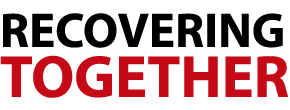Whether it’s through after-school programs, summer reading, family literacy or Lunch at the Library, community partnerships play a vital role in many library-based programs. Disaster preparedness is no exception.

Since 2015, the Sonoma County Library has partnered with the Redwood Empire Food Bank to bring free summer lunches to local students.
“We’re always working with the community,” said Elizabeth Kelley, interim director of the Shasta Public Libraries. “It’s important for our staff to be aware of all of the organizations in town. We’re always building those partnerships…and always referring people.”
Following the Carr Fire in 2019, these partnerships became even more important. The library was able to support the work of Cal HOPE Shasta, an organization formed to assist community members affected by the fire. With help from Shasta County Health and Human Services Agency and Northern Valley Catholic Social Services, Cal HOPE Shasta was able to regularly send staff members and social workers to library events.
In addition to assisting adults, “they were really trying to reach kids, to offer healing and emotional support,” said Kelley. Setting up a table after storytime and dropping into library programs made a major difference.
Identify community partners
As part of disaster response planning, libraries should identify existing and potential community partners. Consider the organizations that you will be most likely to work with in the aftermath of a disaster, including those with whom the library already has a relationship.
“‘There’s an old saying in emergency management — disaster is the wrong time to exchange business cards,’ said Tim Manning, a former deputy administrator at FEMA,” quoted in a 2020 New York Times article. NLS libraries leaders agree.
Connections are much more easily built without the pressure and constraints of a disaster. “Do your networking before something happens,” said Mel Lightbody, Director of the Butte County Library.
Also invite staff members and volunteers to help. Encourage them to suggest community partners or to help make connections using their personal networks.
Discuss partner roles
After reaching out to a community partner, schedule a time to talk about mutual support during a disaster. What role can the library play in helping partners to deliver services? How can the library help to promote partner programs or connect patrons with community resources? Use a Recovering Together conversation guide to help plan a meeting with a community partner.
Tools & Resources
- Recovering Together community partner conversation guide
- “Partners” excerpt from the Libraries Lead the Way facilitation and engagement training
